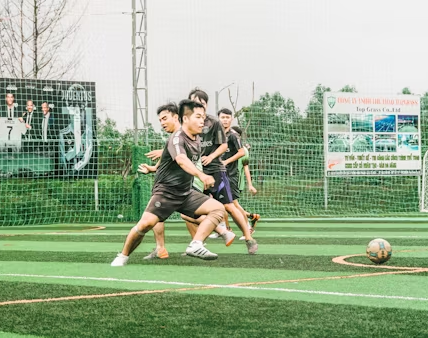The Panenka penalty is one of the most intriguing and audacious techniques in the world of football. Known for its finesse, precision, and psychological play, this penalty is a move that can make the difference between triumph and failure. In this article, we will dive deep into the history of the Panenka, how it’s executed, its psychological impact, and explore why this technique continues to captivate football fans worldwide.

Origins of the Panenka
The Panenka penalty was named after Antonín Panenka, a Czech footballer who first introduced this technique during the 1976 UEFA European Championship final. In a high-stakes match between Czechoslovakia and West Germany, Panenka stepped up to take the final penalty during a tense shootout. Instead of blasting the ball into the corner, Panenka calmly chipped the ball into the middle of the goal, sending the German goalkeeper Sepp Maier diving to one side.
Panenka’s audacity paid off, as his successful penalty sealed the victory for Czechoslovakia and earned him global recognition. The move became an iconic moment in football history, and ever since, the Panenka penalty has been adopted by many players, often in moments of high pressure, as a symbol of both confidence and creativity.
How to Execute a Panenka Penalty
Executing a Panenka requires skill, timing, and mental composure. Here’s a step-by-step breakdown of how it’s done:
The Approach
Unlike a standard penalty kick, where players focus on striking the ball with power, the Panenka demands a more measured and composed approach. A player needs to line up for the shot, typically with a few steps back from the penalty spot, but the key difference is in the run-up: the player must approach the ball with the intent to gently lift it.
Foot Placement
The key to successfully chipping the ball is the precise use of the inside of the foot. Instead of aiming for the lower corners of the goal, the player must strike the ball with a controlled, soft touch aimed directly at the center. The ball should be struck under the middle, with enough power to send it over the goalkeeper but not too much that it loses accuracy.
The Chip
The actual chip is the most crucial part of the technique. The player must avoid hitting the ball too hard, as a strong shot can result in the ball sailing over the goal or not clearing the goalkeeper’s reach. The goal is to create enough elevation to fool the goalkeeper while maintaining accuracy. The subtle arch of the ball creates the illusion that the player is going to shoot for the corners, while in reality, the ball lands softly in the middle.
Psychological Warfare
One of the key components of a successful Panenka penalty is the psychological aspect. The goalkeeper will often dive early to one side in anticipation of a more traditional penalty shot. By calmly chipping the ball in the middle, the player exploits the goalkeeper’s predictability, making the move even more effective. It’s a high-risk, high-reward strategy that relies on mental sharpness.
Famous Panenka Penalties in Football History
The Panenka penalty has left a significant mark on football history. Over the years, numerous players have tried and succeeded with this move, sometimes in the most dramatic of circumstances. Let’s take a look at some memorable Panenka penalties that have captured the imaginations of fans worldwide.
Antonín Panenka (1976)
Of course, the most famous Panenka of all time is the one executed by Antonín Panenka himself in the 1976 European Championship final. The audacity of his chip and its success in a penalty shootout cemented the move’s place in football lore. Panenka’s penalty was cool under pressure and showcased a level of creativity that would influence generations of footballers to come.
Zinedine Zidane (2006)
One of the most iconic Panenka penalties came in the 2006 FIFA World Cup final, where Zinedine Zidane scored in a penalty shootout against Italy. Zidane, known for his calm demeanor on the field, stepped up to take a penalty in the final. With remarkable composure, he sent the ball into the center of the net with a smooth chip. While Italy eventually won the World Cup after a dramatic shootout, Zidane’s Panenka remains one of the most memorable moments from the tournament.
Andrea Pirlo (2012)
In the Euro 2012 quarterfinals, Italy faced England in a tense penalty shootout. Andrea Pirlo, a player celebrated for his technical skill, stepped up and calmly executed a Panenka against English goalkeeper Joe Hart. The elegance and precision of Pirlo’s technique earned him praise, and Italy went on to win the shootout.
Lionel Messi (2015)
Lionel Messi has never been shy to demonstrate his technical brilliance on the pitch, and he showcased his skills in the 2015 Copa America. During a penalty shootout against Colombia, Messi executed a perfectly timed Panenka that sent the goalkeeper in the wrong direction. It was a classic example of Messi’s ability to produce moments of magic even in tense situations.
Kylian Mbappé (2021)
In the 2021 UEFA Champions League quarterfinal, Kylian Mbappé took the spotlight with an audacious Panenka penalty against Bayern Munich’s goalkeeper Manuel Neuer. Mbappé’s coolness under pressure in such a high-profile match demonstrated the evolution of the Panenka and how modern players are now adopting this technique with finesse and confidence.
In Summary
The Panenka penalty remains one of the most memorable and talked-about techniques in football. It’s a move that has captivated fans around the world, not only for its skillful execution but also for its psychological intricacies and high-risk factor. Whether it’s the historic moment when Antonín Panenka first introduced the technique or the dazzling performances by players like Zinedine Zidane and Andrea Pirlo, the Panenka continues to be a symbol of creativity, confidence, and flair on the football field.
FAQs
Who invented the Panenka penalty?
The Panenka penalty was popularized by Czech footballer Antonín Panenka during the 1976 UEFA European Championship final. In a tense penalty shootout against West Germany, Panenka took the final penalty with a calm chip down the center of the goal, catching the goalkeeper off guard and helping Czechoslovakia win the tournament. His audacious move has since been immortalized in football history.
Why is the Panenka risky?
The Panenka is risky because it involves a great deal of finesse. If executed poorly, the ball might be easily saved or miss the target entirely. Additionally, if the goalkeeper reads the move correctly and stays in the center, it becomes much easier to block the shot. There is also the psychological pressure on the player to pull off such a unique shot, knowing that failure could lead to criticism or disappointment.
What are the advantages of using a Panenka?
The main advantage of using a Panenka is its psychological element. It can confuse or trick the goalkeeper, especially if they dive early, which is common. Additionally, it’s a stylish move that shows a high level of confidence and skill. If executed perfectly, it also has a higher chance of going in when compared to traditional low-driven penalties, particularly if the goalkeeper guesses wrong.
Who are some famous footballers who have used the Panenka successfully?
Many football legends have successfully executed the Panenka in high-pressure moments:
Antonín Panenka (Czech Republic) – The originator of the technique in the 1976 European Championship final.
Zinedine Zidane (France) – Zidane executed a memorable Panenka during the 2006 World Cup against Italy.
Andrea Pirlo (Italy) – Known for his calm demeanor, Pirlo chipped the ball in a 2012 Euro penalty shootout against England.
Lionel Messi (Argentina) – Messi has shown his mastery with a Panenka in several important matches, including the 2015 Copa America.
Kylian Mbappé (France) – Mbappé famously used a Panenka in the 2021 UEFA Champions League against Bayern Munich.
What are the risks of attempting a Panenka penalty?
While the Panenka is a brilliant and stylish move, it has its risks. The most obvious is the chance of the goalkeeper guessing correctly and stopping the shot. The technique also requires perfect timing and control, meaning if the player misjudges the chip, the ball might miss the target completely. There’s also the psychological pressure: if the shot fails, the player may face criticism for attempting such a high-risk move.
To read more, click here



